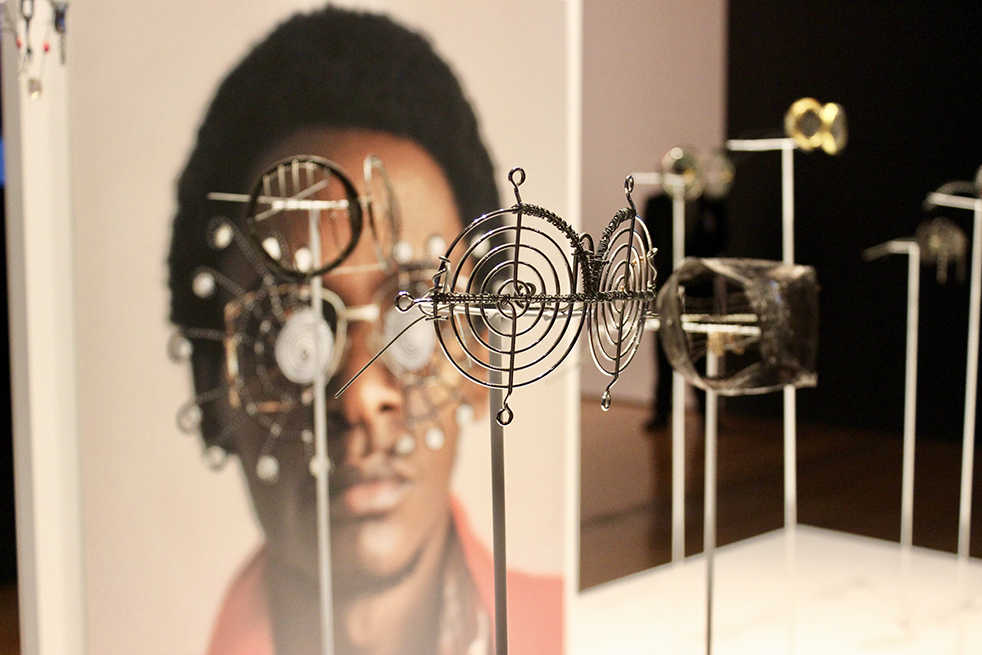The High Museum of Atlanta opened its newest exhibit, “Making Africa: A Continent of Contemporary Design,” on Oct. 14. Atlantans are lucky to have the High in their backyard — the museum is the first American venue to present the exhibit, organized by the Vitra Design Museum and the Guggenheim Museum Bilbao.
“Making Africa” brings a much-needed spotlight to the economic, social and political conditions of Africa in the twenty-first century. The exhibit is geared to creating a global identity for Africa and highlights artists that are completing work for the betterment of the continent.
New artists, thinkers and designers are featured in this collective exhibit. Media types include film, video interviews, digital comics, sculptures, photography and more.
Although the collection addresses a global audience and looks for the advancement and creation of a new Africa, it does not ignore the past of the continent, injured by war and colonization.
The exhibit places photographs of Africa from the past next to contemporary works that are
developing the culture of the area. When the current photographs are displayed next to older ones, the astronomical rate of change is put into perspective. The
postcolonial development and its significance can be understood by the audience to a greater degree.
The exhibit features a multitude of works from 120 artists from 22 countries. The span and diversity of the types of art are awe-inspiring. The creativity of the region, the symbolism in the sculptures and the integration of technology within the exhibit
is striking.
Some portions of the exhibit explicitly educate, using videos and detailed explanations from scholars to explain the intricate history of Africa in a global context. Other pieces are left with little explanation: their presentation in the silence of the dimly lit hall is enough for their messages to be delivered to a curious audience.
Holistically, the exhibit leaves the audience with more understanding of the history and present of Africa and educates more than a traditional exhibit. The goal of “Making Africa” is not to be open-ended or to let the audience to come to their own conclusions; instead, it delivers a strong message of African solidarity and introduces Atlanta visitors to a wide range of art from a wide range of countries.
“Making Africa” is broken into different sections: Prologue, I and We, Space and Object, Origin and Future. Prologue features many basic elements of African art that are used to challenge traditional styling.
The Prologue pushes the audience to challenge the notions they have of Africa. The poster piece for the exhibit, Kenyan artist Cyrus Kabiru’s 2012 “C-Stunner” glasses, is in this section.
These glasses contort perspective through their view, asking the audience to question their view of Africa and its culture. The Prologue also outlines the technological changes that have come to the continent, utilizing interactive displays for African history, politics, demographics and more.
The second portion of the exhibit, I and We, focuses more on fashion, photography, individual expression and gender issues. I and We shines a light on daily life in Africa, highlighting specific cities, like Dakar and Cotonou.
Chris Saunders’s photography and film collection, “The Smarteez,” followed a fashion crew that uses DIY skills to create their collections in Soweto, South Africa. This portion of the exhibit draws attention to pockets of art that decorate Africa’s cultural landscape.
Space and Object focuses on the connection between everyday living space and art behind African construction. This section features objects that may be considered common, but the collection highlights how even the simplest building blocks of necessary life subtely differ in their creation and appearance.
Malian designer Cheik Diallo constructed a bright blue chair from steel wire used in Africa’s fishing economy. The art is not simply a visually appealing object: instead, each portion of the exhibit has its own significant history.
The final section of “Making Africa,” Origin and Future, encourages the audience to consider the future of Africa based on a newfound understanding of its present.
As Africa balances tradition and industrialization, Origin and Future shows what strides are being taken to combine Africa’s cultural elements with the optimism of the future. One artist’s collage on glasswork uses images of African masks with everyday objects.
“Making Africa” is the type of exhibit that must be considered all together. After inspecting each individual element, it is important to understand the complexity of each piece and how it is culturally significant in contemporary Africa and the world at large.
For many viewers, “Making Africa” will offer a glimpse into African modern art. The effort to understand both what makes the continent unique and what it has in common with the West bridges cultural perceptions and increases art appreciation.
